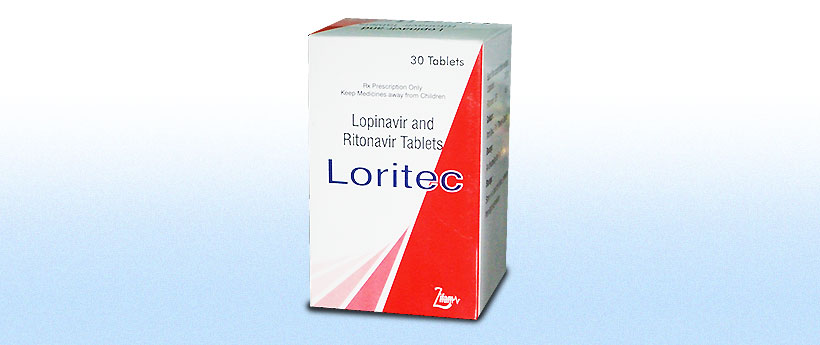Loritec
- ENG
- မြန်မာ
CONTENTS
Lopinavir 200mg/ Ritonavir 50mg
PRESENTATION
30/60 tablets in HAPE plastic bottle
PHARMACOLOGY:
MECHANISM OF ACTION:
Lopinavir and Ritonavir are inhibitors of the HIV-1 protease, prevents cleavage of the Gag-Pol polyprotein, resulting in the production of immature, non-infectious viral particles.
INDICATIONS
LORITEC is an HIV-1 protease inhibitor indicated in combination with other antiretroviral agents for the treatment of HIV-1 infection.
DOSAGE &ADMINISTRATION
Adult Patients Therapy-Naïve Patients: LORITEC tablets 400/100 mg (given as two 200/50 mg tablets) twice daily taken with or without food.
Therapy-Experienced Patients: Ones daily administration of LORITEC is not recommended in therapy-experienced patients. LORITEC tablets 400/100 mg (given as two 200/50 mg tablets) twice daily taken with or without food.
Concomitant Therapy: Efavirenz, nevirapine, (fos) amprenavir or nelfinavir LORITEC tablets should not be administered as a once daily regimen in combination with efavirenz, nevirapine,(fos) amprenavir or nelfinavir. A dose increase is recommended for all patients who use LORITEC tablets. The recommented dose of LORITEC tablets is 500/125 mg (such as two 200/50 tablets and half 200/50 mg tablet) twice daily in combination with efavirenz, nevirapine, (fos)amprenavir or nelfinavir.
CONTRAINDICATIONS
LORITEC is contraindicated in patients with previously demonstrated clinically significant hypersensitivity (e.g.,Stevens-Johnson syndrome, erythema multiforme) to any of its ingredients,
ADVERSE REACTIONS
The most common adverse reactions (>5%) were diarrhea, nausea, abdominal pain, asthenia, vomiting, headache and dyspepsia.
DRUG INTERACTION
lCoadministration of LORITEC can after the concentrations of other drugs and other drugs may alter theconcentrations of lopinavir.
Use In Specific Populations
Pregnancy
Pregnancy Category C
Embryonic and fetal developmental toxicities (early resorption, decresed fetal viability, decreased fetal body weight, increased incidence of secletal variations
Pediatric Use
The safety, efficacy and pharmacokinetic profiles of LORITEC in pediatric patients below the age of 14 days have not been established. LORITEC once daily has not been evaluated in pediatric patients.






